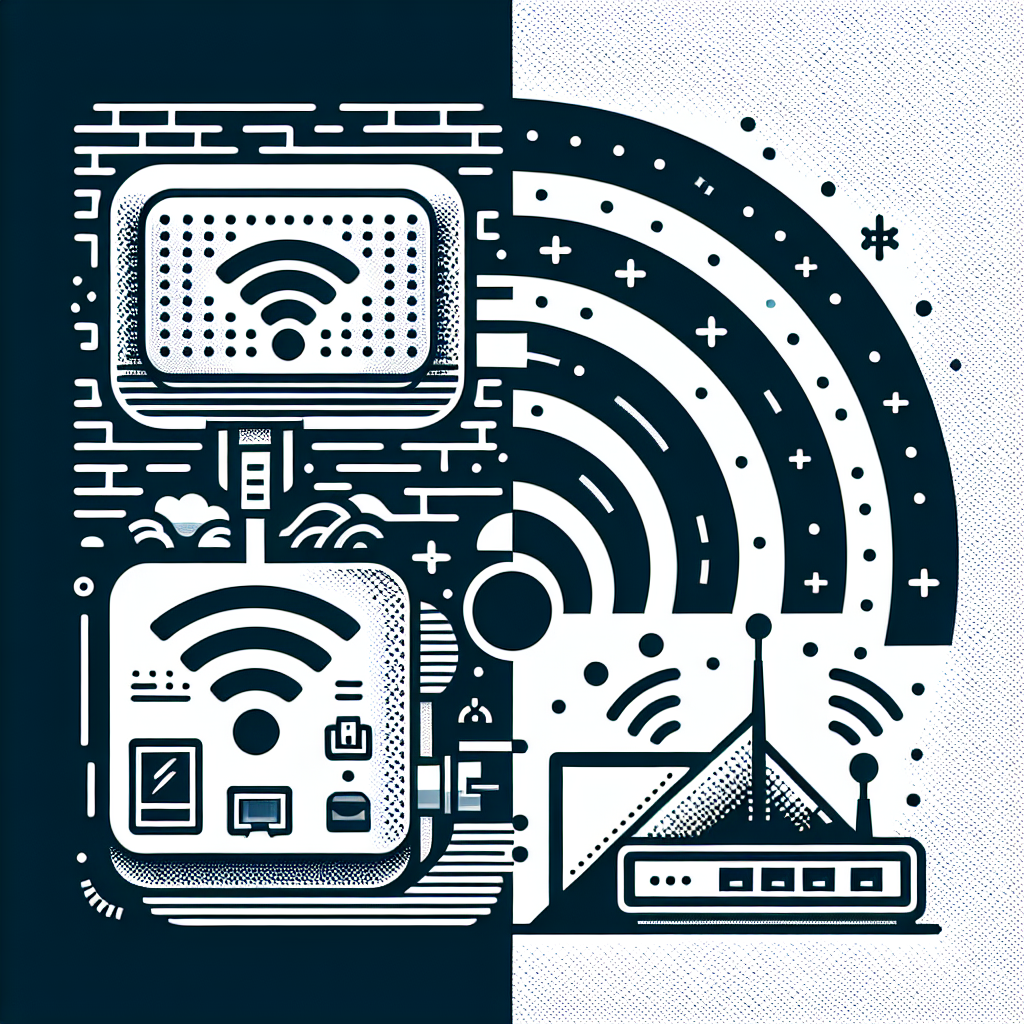In today’s connected world, having a reliable internet connection is vital. Whether for work, streaming, or gaming, understanding your networking hardware can significantly impact your online experience. Two critical components often mentioned are WiFi adapters and WiFi extenders. Though they might sound similar, they perform very different roles. This article explores the differences between a WiFi adapter and a WiFi extender to help you determine which is best suited for your needs.
Understanding WiFi Adapters
A WiFi adapter is a device that allows a computer or another device to connect to a wireless network. It can be an external piece of hardware that you plug into your device, usually via a USB port, or it can be an internal component built into the device. WiFi adapters are essential for devices that do not have built-in wireless capabilities, such as some older desktop computers.
Types of WiFi Adapters
- USB WiFi Adapters: These are small, portable, and easy to use. They plug into a USB port and provide instant wireless connectivity.
- PCIe WiFi Adapters: These are internal cards installed on a desktop motherboard. They offer more stable and faster connections but require installation inside the device.
- PCMCIA WiFi Adapters: Mostly used in older laptops, these adapters fit into a specialized slot and provide wireless capabilities.
Below is a quick table summarizing the different types of WiFi adapters and their characteristics:
| Type | Installation | Applications |
|---|---|---|
| USB WiFi Adapters | External | Easy setup, portable, suitable for most devices |
| PCIe WiFi Adapters | Internal | Stable, fast connection, requires installation |
| PCMCIA WiFi Adapters | External/Internal | Older laptops, less common today |
Understanding WiFi Extenders
A WiFi extender, also known as a WiFi repeater or booster, is a device designed to extend the coverage of a wireless network. It works by receiving the existing WiFi signal, amplifying it, and then transmitting the boosted signal to areas where the original signal is weak.
Types of WiFi Extenders
- Single-Band Extenders: These work on a single frequency band (2.4 GHz or 5 GHz) and are generally easier to set up. They provide a straightforward extension of the existing network.
- Dual-Band Extenders: Operating on both 2.4 GHz and 5 GHz frequency bands, these offer greater flexibility and better performance. They can handle more devices and provide faster speeds.
- Mesh WiFi Systems: These are advanced systems that consist of multiple nodes working together to create a seamless and highly efficient wireless network across a large area.
The table below provides a summary of the types of WiFi extenders and their main features:
| Type | Frequency Bands | Applications |
|---|---|---|
| Single-Band Extenders | 2.4 GHz or 5 GHz | Simple setup, ideal for small homes |
| Dual-Band Extenders | 2.4 GHz and 5 GHz | Better performance, supports more devices |
| Mesh WiFi Systems | 2.4 GHz and 5 GHz | Large areas, seamless and efficient |
Key Differences Between WiFi Adapters and WiFi Extenders
To further clarify the distinctions, let’s look at the key differences between WiFi adapters and WiFi extenders:
Purpose and Functionality
WiFi Adapters: These are primarily used to add wireless capability to a device. They enable devices without built-in WiFi to connect to wireless networks.
WiFi Extenders: These are used to boost and extend the range of an existing wireless network. They do not add wireless capabilities to devices but instead enhance the coverage and strength of the existing network.
Setup and Installation
WiFi Adapters: Installation is usually straightforward, especially with USB adapters. Plug them into the USB port, install the necessary drivers, and connect to the network. PCIe adapters require opening the computer case and installing the card on the motherboard.
WiFi Extenders: Setup can be simple but varies depending on the type. Single-band and dual-band extenders often require you to connect them to the existing network via WPS or a web interface. Mesh systems might require a more comprehensive setup process involving multiple devices.
Applications and Use Cases
WiFi Adapters: Ideal for devices that lack wireless connectivity, such as older desktops or certain gaming consoles. They are also useful for upgrading a device’s wireless capabilities to support faster speeds and newer standards.
WiFi Extenders: Best suited for improving network coverage in large homes or offices. They help eliminate dead zones and ensure a more stable connection across a wider area.
When to Use a WiFi Adapter
Consider using a WiFi adapter in the following scenarios:
- If you have an older device without built-in wireless capabilities.
- If you need a portable solution for multiple devices.
- If you want to upgrade your device to support faster WiFi standards like 802.11ac or WiFi 6.
When to Use a WiFi Extender
You should consider a WiFi extender if:
- You have a large home or office with areas where the WiFi signal is weak.
- You need to eliminate dead zones to ensure a stable connection throughout your space.
- Your existing network struggles to handle multiple devices and you need to boost the overall coverage.
Conclusion
Understanding the differences between WiFi adapters and WiFi extenders is crucial for optimizing your network setup. While adapters add wireless capabilities to devices, extenders enhance the range and strength of your existing network. By knowing their unique functions and applications, you can make informed decisions to improve your internet experience. Whether you need to connect an old desktop to WiFi or eliminate dead zones in your home, there’s a suitable solution for you.

